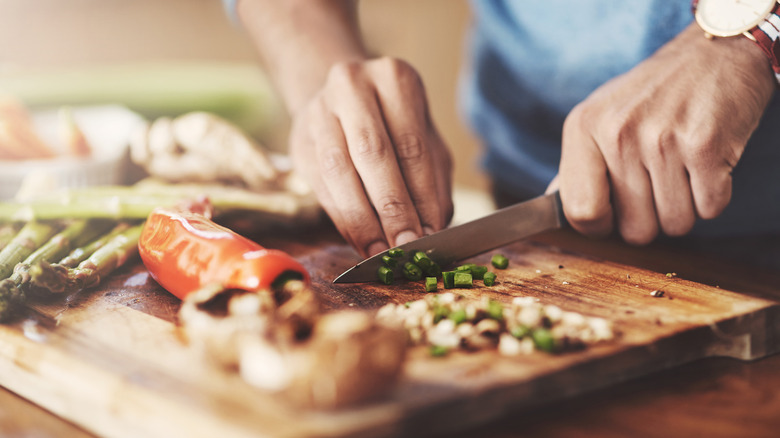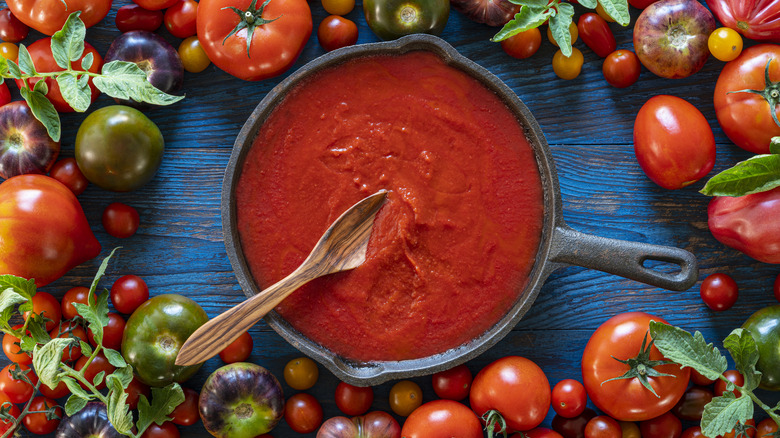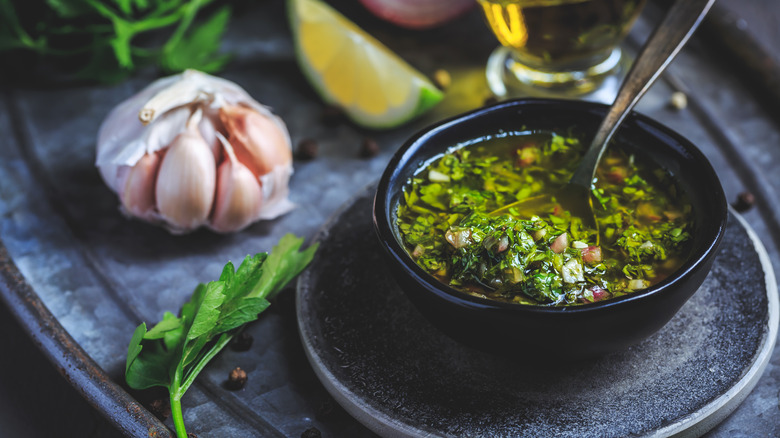Look Out For Batch Steps To Get The Most Out Of Any Recipe
Cooking at home, whether for yourself or for your whole family, can sometimes feel like solving a complicated calculus equation. Since most recipes only require specific amounts of particular ingredients, finding the right quantity at the best price can feel impossible, especially when buying in bulk is often cheaper at stores. Consequently, you might come home with purchases and realize that you have too much of certain ingredients, of which you only need small amounts of for your intended recipe.
However, instead of wasting expensive groceries or letting them languish in your refrigerator, you can maximize your use of them by utilizing batch steps. Batch steps refer to stages in recipes that yield more than what is needed for the current dish, but can be useful in others. These steps typically involve a fundamental combination of ingredients applicable to many other recipes. By making them in bulk, you can coordinate your shopping to accommodate several different recipes that take advantage of the same ingredients. This approach maximizes the utility of your purchases and minimizes food waste.
Common batch steps for recipes
If you are a practiced home cook, you already recognize that many recipes share common ingredients or components, especially if they originate from similar cultures or geographic regions. For example, many Mediterranean recipes contain tomatoes, onions, and garlic. If you're planning to make Italian food one night and Lebanese the next, chances are you're going to use some of the same ingredients. You can streamline your process by preparing more of the ingredients when you make the first meal, saving time several days later when you make the second. In fact, you can save a lot of time (and money) by keeping some everyday staples, such as minced garlic, processed and stored in oil, in the refrigerator. That way it's on-hand and ready to use whenever you need it.
Another way that batch steps can save you time and money is by preparing larger quantities of components that can be stored safely for later use. For instance, if you're a fan of Japanese food, you're most likely going to need dashi, a fundamental component in Japanese cooking. Rather than making small, individual batches, you can prepare a larger quantity and store it in the refrigerator, or freeze it in ice cube trays for later use.
Prepare your condiments in batches
Another common component you can make in large batches is sauces and condiments. For example, a basic tomato sauce made with tomatoes and onions can be used in many different dishes, acting as a base for everything from pasta sauces to ratatouille. A compound butter made with garlic, shallots, and seasonings can be melted on a delectable steak, or tossed with rice, for a savory side dish. A Marie Rose sauce — made with mayonnaise, ketchup, and other seasonings — can serve as both a salad dressing and an alternative to cocktail sauce.
Another sauce that you can make in large batches is a classic chimichurri. This sauce, a staple in Argentinian cuisine, is easy to prepare, and large batches can be stored for a long time. Mix olive oil with red wine vinegar, chopped garlic, chili peppers, and lots of parsley. Not only is chimichurri fantastic on grilled meats of all types, but if you add additional lemon juice or vinegar, it can serve as a vinaigrette for grilled vegetables and salads.



